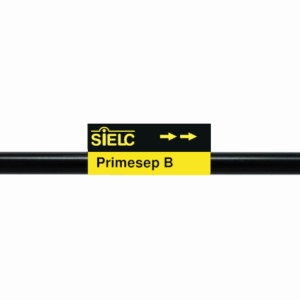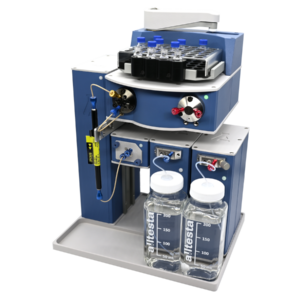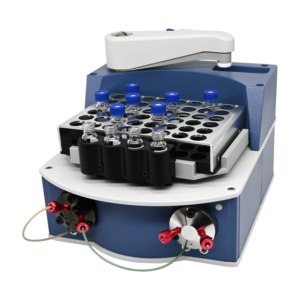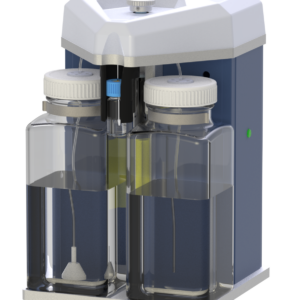Alltesta HPLC Method for Berberine, Epiberberine on Primesep B by SIELC Technologies
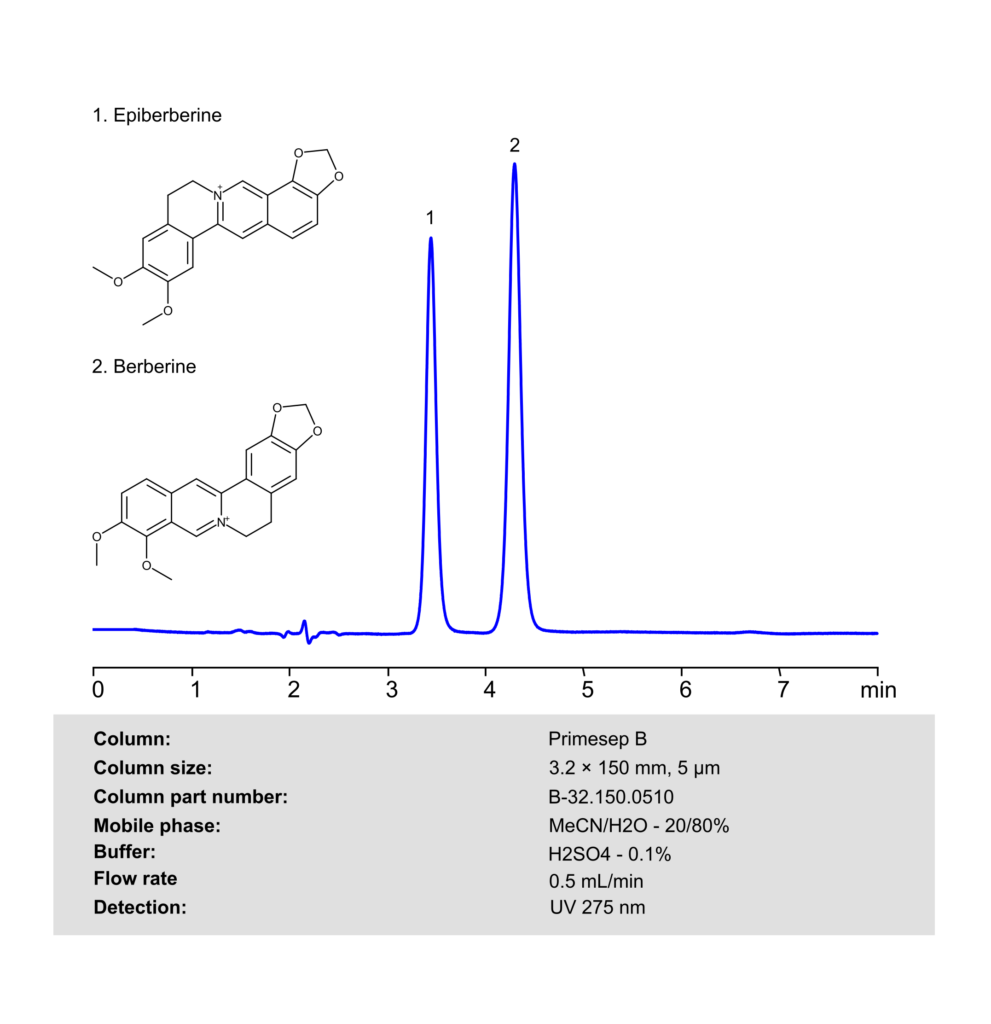
High Performance Liquid Chromatography (HPLC) Method for Analysis of Berberine, Epiberberine
Epiberberine and Berberine are both natural alkaloids found in various medicinal plants, particularly in the Berberis species. They share a similar chemical structure and biological properties but have distinct effects.
Berberine is well-known for its antimicrobial, anti-inflammatory, and metabolic benefits, including blood sugar regulation and cholesterol reduction. It is commonly used for diabetes, gut health, and cardiovascular support.
Epiberberine is a structural isomer of berberine and is believed to enhance its bioavailability and metabolic effects. Research suggests it may contribute to glucose metabolism and lipid regulation, making it a potential complementary compound in berberine-based supplements.
Epiberberine and berberine can be retained and analyzed using a Primesep B mixed-mode stationary phase column. The analysis employs an isocratic method with a simple mobile phase composed of water, acetonitrile (MeCN), and sulfuric acid as a buffer. Detection is performed using UV at 275 nm.
| Column | Primesep B, 3.2 x 150 mm, 5 µm, 100 A, dual ended |
| Mobile Phase | MeCN/H2O – 20/80% |
| Buffer | H2SO4 -0.1% |
| Flow Rate | 0.5 ml/min |
| Detection | UV 275 nm |
| Class of Compounds | Isoquinoline Alkaloid |
| Analyzing Compounds | Berberine, Epiberberine |
You can view examples of chromatograms obtained using the Allesta instrument and Sielc columns by clicking here.
Application Column
Primesep B
Column Diameter: 3.2 mm
Column Length: 150 mm
Particle Size: 5 µm
Pore Size: 100 A
Column options: dual ended
Epiberberine

